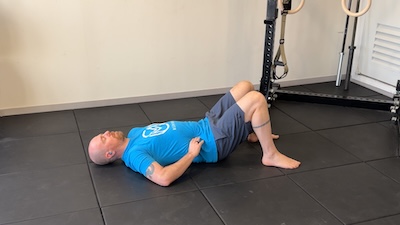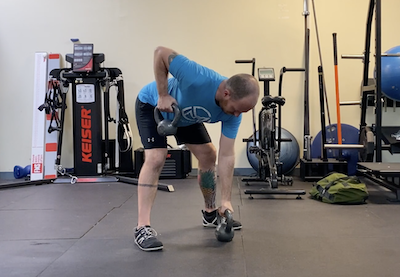Psoas March
Psoas March
The psoas march is an underrated but highly effective exercise that targets the hip flexors, particularly the psoas muscle, while also engaging the core. By strengthening these crucial muscles, the psoas march helps improve posture, hip stability, and mobility, making it a key movement for athletes and fitness enthusiasts alike. It reinforces proper biomechanics essential for running, squatting, and daily activities that require hip flexion.
Its versatility allows for modifications to suit different fitness levels and goals, from using a resistance band for added intensity to adjusting the range of motion for better control. The psoas march is particularly beneficial for individuals who sit for prolonged periods, as it counteracts the negative effects of tight hip flexors and promotes optimal movement patterns. Including it in your routine enhances athletic performance and functional fitness by building a resilient core and flexible hip flexors, reducing the risk of lower back pain and improving your ability to lift and move with greater ease. Incorporate the psoas march to optimize your movement quality and overall stability
Equipment Needed
- Open floor or yoga mat
- Loop resistance band or theraband
Instructions for the psoas march:
Basic
- While sitting on the ground wrap a loop band around your feet
- Lie flat and elevate your legs so that your hips and knees are bent to 90 degrees
- Press your back against the floor by engaging your core
- Drive one leg towards the floor, straightening your knee, while holding the other leg still
- Hold for a 2+ count then return to the starting position before switching sides
Advanced
- While sitting on the ground wrap a loop band around your feet
- Lie flat and elevate your legs so that your heels are several inches off the ground with knees straight
- Press your back against the floor by engaging your core
- Pull one leg up as if you were marching, bending the knee as you go; hold the other leg still
- Hold for a 2+ count then return to the starting position before switching sides
Common Errors
Many people don’t engage their core well during these exercises. Your back should remain flat on the floor through the entire movement.
psoas march Progressions / Regressions:
If this is too challenging:
- Try without the band. It changes the exercise a bit but helps to teach you how to hold your core steady as your legs move
If you want more of a challenge:
- Try the advanced progression with legs straight for an extra challenge



